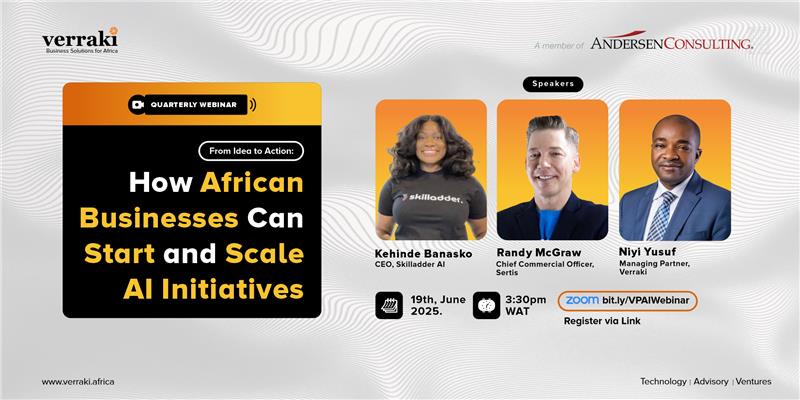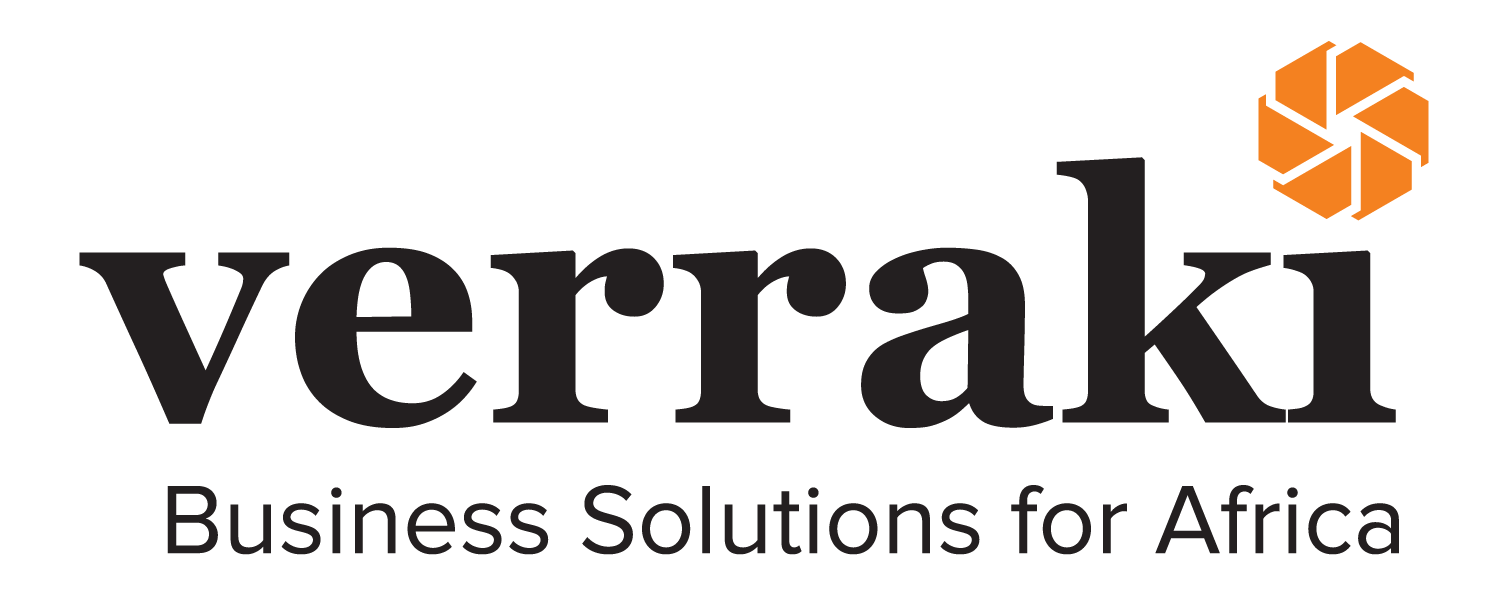
Top 10 Takeaways to Start and Scale AI with Confidence
On June 19, 2025, we hosted a webinar on Artificial Intelligence (AI) for business growth with the theme: “From Idea to Action: How African Businesses Can Start and Scale AI Initiatives.”
Moderated by Niyi Yusuf, Managing Partner at Verraki (A Member of Andersen Consulting), the session featured two seasoned speakers:
- Randy McGraw, Chief Commercial Officer at Sertis
- Kehinde Banasko, CEO of Skilladder AI
They shared real-world experiences and practical tips for integrating AI into African businesses. Here are the top 10 insights from that session that every business leader in Africa should know.
Start with Business Goals, Not Technology Fascination
Before deploying AI, African businesses must clearly define the specific problems they want to solve such as reducing hiring time, improving customer conversion, or predicting inventory needs. It was emphasised that AI is not a “magical fix” but a tool whose impact depends on aligning with measurable goals.
As Randy McGraw noted, “If you can’t measure the benefit, AI becomes superfluous.”
Data Readiness is Non-Negotiable
AI is only as good as the data it is trained on. Most African companies are still grappling with fragmented or poor-quality data. Randy McGraw emphasised that "AI always starts at the data layer," yet many firms in the region are still digitising basic operations. AI initiatives must begin with a serious data readiness exercise, organising and cleansing structured (e.g., spreadsheets) and unstructured (e.g., emails, PDFs) data. Without this foundation, enterprises risk wasting resources on underperforming models. African businesses must treat data readiness as a foundational, not optional, starting with centralisation and minimal cleaning of internal datasets.
Avoid Overengineering, Start Small
Kehinde Banasko from Skilladder AI, admitted their early AI efforts were slowed by “overengineering” and unrealistic. Iexpectationsnstead of chasing perfection, they shifted to building minimum viable prototypes, testing quickly, and iterating based on user feedback. AI systems, like people, learn and improve over time; simplicity enables faster adoption.
Know When to Use Predictive or Generative AI
Predictive AI uses historical data to forecast outcomes, such as retail sales or supply chain delays. Generative AI, on the other hand, creates new content or insights based on prompts (like summarising board minutes or drafting HR policies). Businesses should identify which approach suits their use case or combine for optimal outcomes.
Cross-Functional Involvement Ensures Successful Implementation
AI projects should never be kept just within IT or data teams. Both speakers emphasised the importance of involving HR, finance, legal, operations, and leadership from day one. This inclusive approach drives broader adoption, captures all use cases, and promotes cultural alignment with the AI’s outputs.
Start with Knowledge Management AI
A strong entry point for AI adoption is using it to manage unstructured internal information. Randy highlighted a recent deployment at a major bank where a knowledge management AI system improved product consistency across 600 branches and cut HR query handling time by 25%. This removes inefficiencies and reduces human error across departments.
Private LLMs Reduce AI Security Risk
Public AI models such as ChatGPT pose serious risks for companies handling sensitive data. Randy explained how private, or hybrid large language models (LLMs) hosted on-premises or in a private cloud eliminate these risks. At around $30,000 for a basic setup, they’re viable for mid-sized firms concerned about data leaks, compliance, or regulatory exposure.
Use AI to Accelerate Talent Development
AI isn’t just about automation; it can empower entry-level employees to contribute sooner. At Skilladder AI, AI tools help junior hires upskill rapidly and complete tasks that previously required mentorship or extensive training. This enables startups and Small and Medium Enterprises to scale teams confidently without sacrificing quality or productivity.
Cybersecurity and AI Must Go Hand in Hand
AI deployments must include protection against cybersecurity risks, especially data poisoning, model manipulation, and hidden trigger attacks. Randy emphasised that data cleansing, access control, and privacy protocols should be embedded into the AI design and not added later. AI initiatives that ignore security risk can damage customer trust and regulatory standing.
AI is a Strategic Asset, Not a Cost Centre
Unlike static software, AI systems improve over time. As Randy put it, they are “living, breathing, improvable products” that gain value as they learn from company data. Over time, they become intangible assets that enhance enterprise value, impacting productivity, revenue, decision-making, and competitive advantage.
For African businesses, the future of AI starts with clear strategy, data discipline, and incremental wins. As our speakers reminded us, you don’t need to have it all figured out before you begin. Just start small, stay focused, and scale wisely.
Want to explore more AI insights?


